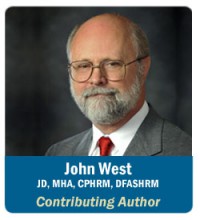 There are a number of laws in the various states that prohibit the abuse or exploitation of certain classes of people. The classes of persons who are protected generally include those who are particularly vulnerable to abuse and who may be incapable of defending themselves. The prohibition against child abuse is inherent in virtually all state statutory schemes and is widely known. Less well known, at least outside the long-term care industry, is the prohibition against the abuse or exploitations of the elderly and other vulnerable adults.
There are a number of laws in the various states that prohibit the abuse or exploitation of certain classes of people. The classes of persons who are protected generally include those who are particularly vulnerable to abuse and who may be incapable of defending themselves. The prohibition against child abuse is inherent in virtually all state statutory schemes and is widely known. Less well known, at least outside the long-term care industry, is the prohibition against the abuse or exploitations of the elderly and other vulnerable adults.
While all states have statutes dealing with elder abuse, not all statutes are the same. Some protect persons who are older than a certain age, while others also protect disabled adults of any age. However, the statutory schemes have adopted common definitions and descriptions of elder abuse. According to the Centers for Disease Control and Prevention (CDC), there are five types of elder abuse:
- Physical Abuse: The intentional use of physical force that results in acute or chronic illness, bodily injury, physical pain, functional impairment, distress or death.
- Sexual Abuse or Abusive Sexual Contact: Forced and/or unwanted sexual interaction (both touching and non-touching acts) of any kind with an older adult.
- Emotional or Psychological Abuse: Verbal or nonverbal behavior that results in the infliction of anguish, mental pain, fear or distress.
- Neglect: Failure by a caregiver or other responsible person to protect an elder from harm or the failure to meet needs for essential medical care, nutrition, hydration, hygiene, clothing, basic activities of daily living, or shelter that results in a serious risk of compromised health and/or safety.
- Financial Abuse or Exploitation: The illegal, unauthorized or improper use of an older individual’s resources by a caregiver or other person in a trusting relationship for the benefit of someone other than the older individual.
Common Signs of Abuse and Neglect
These findings are not diagnostic of elder abuse, but rather should arouse suspicion to consider further evaluation:
- Has trouble sleeping
- Seems depressed or confused
- Loses weight for no reason
- Displays signs of trauma, like rocking back and forth
- Acts agitated or violent
- Becomes withdrawn
- Stops taking part in activities he or she enjoys
- Has unexplained bruises, burns or scars
- Looks messy, with unwashed hair or dirty clothes
- Develops bed sores or other preventable conditions
- Senior’s finances suddenly change for the worse
 Elder abuse is typically reportable to a state social services agency such as Adult Protective Services. If a report is made in good faith (i.e., without a bad faith intent to unnecessarily harm the person accused of abusing someone), the reporter is normally afforded immunity from suit. Some states may impose liability on someone who was required to report elder abuse but failed to do so, which subsequently caused injury to the vulnerable adult.
Elder abuse is typically reportable to a state social services agency such as Adult Protective Services. If a report is made in good faith (i.e., without a bad faith intent to unnecessarily harm the person accused of abusing someone), the reporter is normally afforded immunity from suit. Some states may impose liability on someone who was required to report elder abuse but failed to do so, which subsequently caused injury to the vulnerable adult.
States normally have a registry of persons who have been convicted of or sanctioned for committing acts of elder abuse. Long-term care and other healthcare organizations are required to check the registry before they hire someone and refrain from hiring anyone who appears on the registry. This does not, however, mean that the problem is confined to nursing homes. In actuality, approximately 95% of elders live in a private home (either their own or a family member’s). In fact, 90% of abusers are spouses, partners, adult children or other family members, which is one of the main reasons that the detection and prevention of elder abuse is complicated. Under those circumstances − living with their abusers − elderly adults may not be forthcoming about their experiences.
Elder abuse may be difficult to detect, but detecting it may save the life of an older adult.
This topic is covered extensively in our online course - Elder Abuse: Detection & Prevention.


